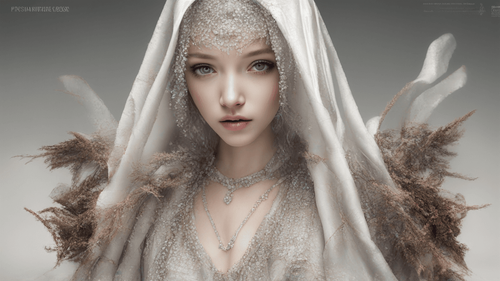
Introduction
In a world where technology continues to shape and redefine various aspects of our lives, the realm of art is no exception. One of the most intriguing and innovative advancements in recent years is the emergence of AI drawn images. From generating stunning artworks to aiding artists in their creative process, artificial intelligence has opened new avenues for artistic expression.
AI Drawn Images: A Closer Look
Artificial Intelligence, often referred to as AI, is a technology that enables machines to mimic human intelligence. It involves the creation of algorithms and systems that can process data, learn from it, and make decisions or perform tasks based on that data. AI drawn images, a fascinating application of this technology, involve the use of algorithms to generate visual art pieces that captivate and inspire.
The Creative Process Enhanced by AI
The marriage of human creativity and artificial intelligence has given birth to a remarkable synergy. Artists, armed with AI tools, can explore new dimensions of their imagination. They can input their ideas, preferences, and styles into AI software, which then generates images that reflect these inputs. This unique collaboration between human ingenuity and machine learning has led to the creation of awe-inspiring artworks that push the boundaries of artistic expression.
AI Drawn Images in Various Forms of Art
AI drawn images have made a significant impact across various forms of art, including:
1. Visual Arts
From paintings to illustrations, AI has demonstrated its ability to generate visually stunning and thought-provoking images. Artists can leverage AI algorithms to experiment with different styles, color palettes, and techniques, leading to a diverse range of artworks that cater to a wide audience.
2. Graphic Design
In the realm of graphic design, AI drawn images have simplified and expedited the creative process. Designers can utilize AI tools to generate logos, banners, and other visual elements that align with a brand's identity, ultimately enhancing its visual communication.
3. Fashion Design
AI has also ventured into the world of fashion, assisting designers in conceptualizing unique patterns, textiles, and clothing designs. This fusion of technology and fashion has paved the way for cutting-edge creations that redefine the industry's traditional norms.
4. Architectural Visualization
Architects and urban planners benefit from AI-generated images to visualize structures and urban spaces. These images allow professionals to explore design possibilities and communicate their ideas more effectively to clients and stakeholders.
The Evolution of AI in Art
The integration of AI in the artistic domain has undergone a remarkable evolution. Early AI-generated images often lacked the finesse and nuance of human-created art. However, as algorithms and machine learning techniques improved, AI drawn images started to exhibit a level of sophistication that captured the attention of artists, critics, and enthusiasts alike.
Challenges and Opportunities
While AI drawn images present a world of opportunities, they also come with their set of challenges:
1. Preservation of Human Touch
Critics argue that AI-generated art may lack the emotional depth and personal touch that human artists infuse into their creations. The challenge lies in finding ways to retain the authenticity and emotional resonance that are characteristic of human-made art.
2. Copyright and Ownership
The question of copyright ownership becomes complex when AI is involved in the creative process. Determining whether the AI or the human programmer holds the rights to the artwork raises legal and ethical questions that require careful consideration.
3. Pushing Creative Boundaries
On the flip side, AI drawn images have encouraged artists to explore unconventional techniques and styles. The technology challenges artists to step out of their comfort zones and experiment with AI tools, leading to the discovery of innovative artistic avenues.
FAQs
Are AI drawn images considered true art?
Absolutely. AI drawn images are a manifestation of creative collaboration between human artists and machine learning algorithms. They offer a unique blend of innovation and artistic expression.
Can AI replace human artists?
AI is a tool that enhances artistic capabilities rather than replacing human artists. It complements human creativity and aids in the creative process, opening new horizons for exploration.
How do AI algorithms learn artistic styles?
AI algorithms learn artistic styles by analyzing vast datasets of existing artworks. They identify patterns, color palettes, and brush strokes, allowing them to generate images that emulate various artistic styles.
Do AI drawn images have a market value?
Yes, AI drawn images have gained recognition in the art market. Collectors and enthusiasts appreciate the fusion of technology and art, contributing to the market value of AI-generated artworks.
What role does the artist play in AI-generated art?
The artist remains integral to the AI-generated art process. They provide the initial input, conceptualize the artwork, and curate the outputs generated by AI algorithms.
Is AI art a passing trend?
AI art is not a passing trend; it represents a paradigm shift in artistic creation. As technology continues to advance, AI's role in art will likely expand, shaping the future of artistic expression.
Conclusion
The realm of AI drawn images is a testament to the limitless possibilities that arise when technology and creativity intertwine. From fostering collaboration between humans and machines to pushing the boundaries of traditional artistic norms, AI drawn images have ushered in a new era of innovation. As this dynamic field continues to evolve, it invites artists, technologists, and enthusiasts to embark on a journey of exploration, innovation, and self-discovery, redefining the very essence of what it means to create art in the digital age.